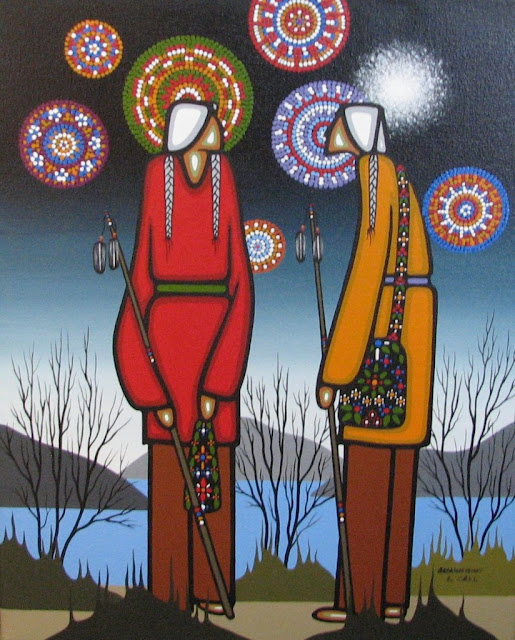Leland Bell (September 17, 1922 – September 18, 1991) was an American painter.
Leland Bell was a self-taught painter whose passion for the discipline of painting has inspired and influenced many. He was also a fierce advocate for artists that he admired. In the early years of his career these included Karl Knaths, Jean Arp, and Piet Mondrian; in the mid-1940s his allegiance to abstract painting receded after he formed a friendship with Jean Hélion, and Bell subsequently became a champion of Hélion, Fernand Léger, Balthus, Alberto Giacometti, and André Derain.Bell was also a jazz aficionado and drummer.
In 1944 he married the painter Louisa Matthíasdóttir (1917–2000), whose figurative style influenced his work.In contrast to Matthíasdóttir, who worked quickly, Bell labored over his paintings, sometimes for years. The couple had a daughter, Temma, in 1945. The family divided their time between New York and Matthíasdóttir's native Iceland.
Bell was active as a painter, teacher, and lecturer. In 1987, he had a retrospective exhibition at the Phillips Collection in Washington, DC. He was diagnosed with leukemia in the 1980s, and died September 18, 1991.Wikipedia
Leland Bell was a self-taught painter whose passion for the discipline of painting has inspired and influenced many. He was also a fierce advocate for artists that he admired. In the early years of his career these included Karl Knaths, Jean Arp, and Piet Mondrian; in the mid-1940s his allegiance to abstract painting receded after he formed a friendship with Jean Hélion, and Bell subsequently became a champion of Hélion, Fernand Léger, Balthus, Alberto Giacometti, and André Derain.Bell was also a jazz aficionado and drummer.
In 1944 he married the painter Louisa Matthíasdóttir (1917–2000), whose figurative style influenced his work.In contrast to Matthíasdóttir, who worked quickly, Bell labored over his paintings, sometimes for years. The couple had a daughter, Temma, in 1945. The family divided their time between New York and Matthíasdóttir's native Iceland.
Bell was active as a painter, teacher, and lecturer. In 1987, he had a retrospective exhibition at the Phillips Collection in Washington, DC. He was diagnosed with leukemia in the 1980s, and died September 18, 1991.Wikipedia
"Leland Bell's paintings are of stylized human figures sharing the affinity of family or friends, often depicting imagery of nurturing, sharing, learning, peace and serenity.
"My art comes from the Three Fires (or Midewiwin) tradition. That is what I believe in. I came to this belief through a dream I had about peace. It was a deeply spiritual experience. After consulting with Elders I began trying to build my sense of spirituality. Then I needed to have an Indian name. I consulted with some elders and asked them to help me find my name. I was given the name Bebaminojmat which, loosely translated, means, 'when you go around you talk about good things'. Then I fasted to prepare my body and my mind to talk to the Creator. This is where my art comes from.
"My art comes from the Three Fires (or Midewiwin) tradition. That is what I believe in. I came to this belief through a dream I had about peace. It was a deeply spiritual experience. After consulting with Elders I began trying to build my sense of spirituality. Then I needed to have an Indian name. I consulted with some elders and asked them to help me find my name. I was given the name Bebaminojmat which, loosely translated, means, 'when you go around you talk about good things'. Then I fasted to prepare my body and my mind to talk to the Creator. This is where my art comes from.
"The circle is central to our tradition. The Creator sits in the East. Yellow is the colour for that direction; the sacred herb is tobacco; the animal is the eagle. Red is the colour of the South which is the place of all young life, of the little animals; the sacred plant is cedar. The West is the place of life; it's colour is black and the sacred medicine is sage. All the healing powers come from the North; its colour is white; sweetgrass comes from there; and that is where the sacred bear sits. "The Circle is what my paintings are based on. The rounded lines are deliberate ... what I create is something simple and serene and peaceful."
All the paradigms that sustain his creativity exist within his Anishinabe culture. He says that he absorbs what he needs and discards what he doesn't need from other cultures and is committed to remain Anishinaabe.
In the same manner that the first wave of Woodlands artists contributed to his life, Leland Bell has also been an art instructor and has conducted numerous workshops and presentations across the continent.
Leland Bells's work is represented in many prominent art collections in North America and Europe and is available for sale at the Wahsa Gallery in Winnipeg. "(native-art-in-canada.com)
In the same manner that the first wave of Woodlands artists contributed to his life, Leland Bell has also been an art instructor and has conducted numerous workshops and presentations across the continent.
Leland Bells's work is represented in many prominent art collections in North America and Europe and is available for sale at the Wahsa Gallery in Winnipeg. "(native-art-in-canada.com)











No comments:
Post a Comment